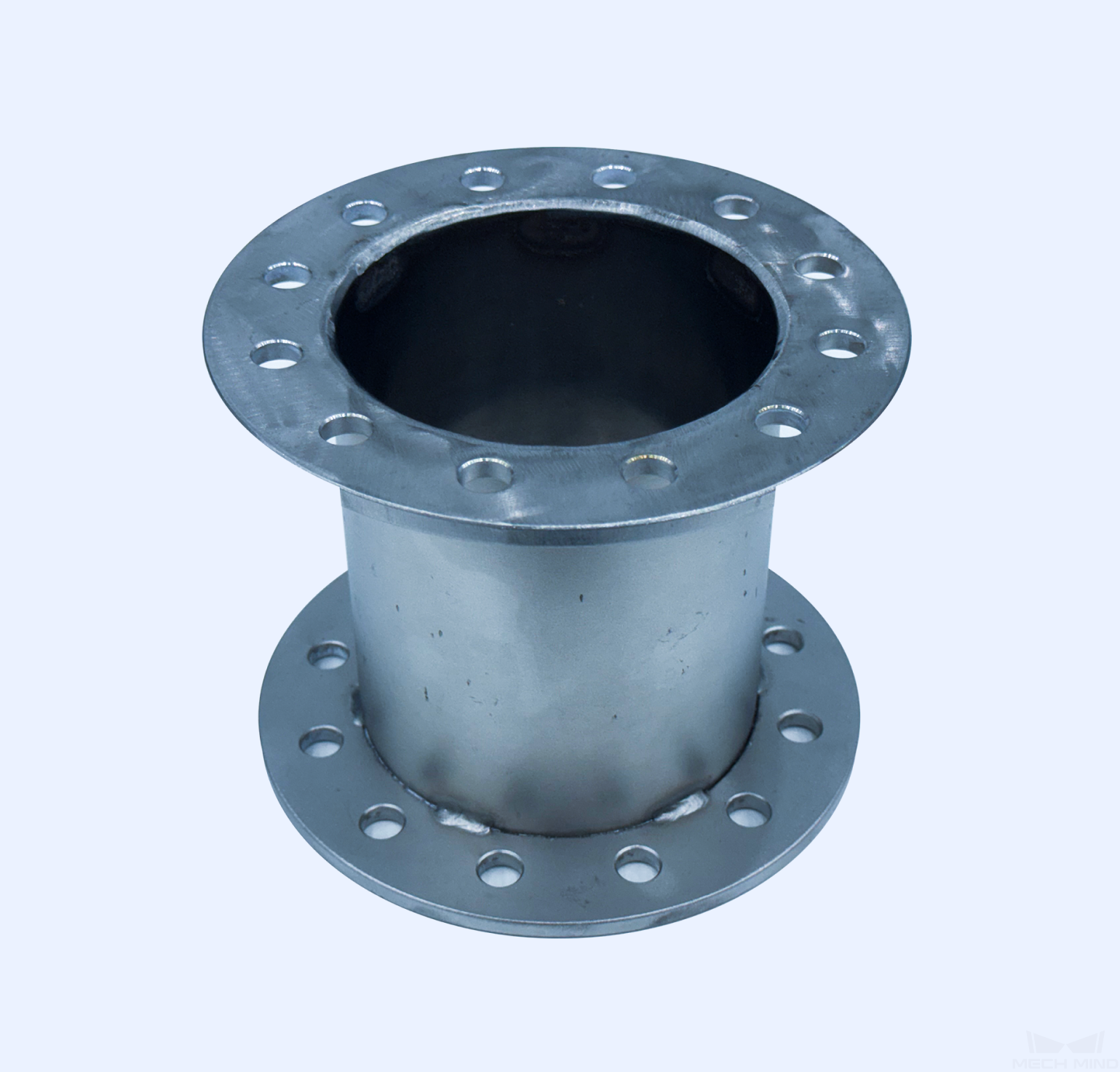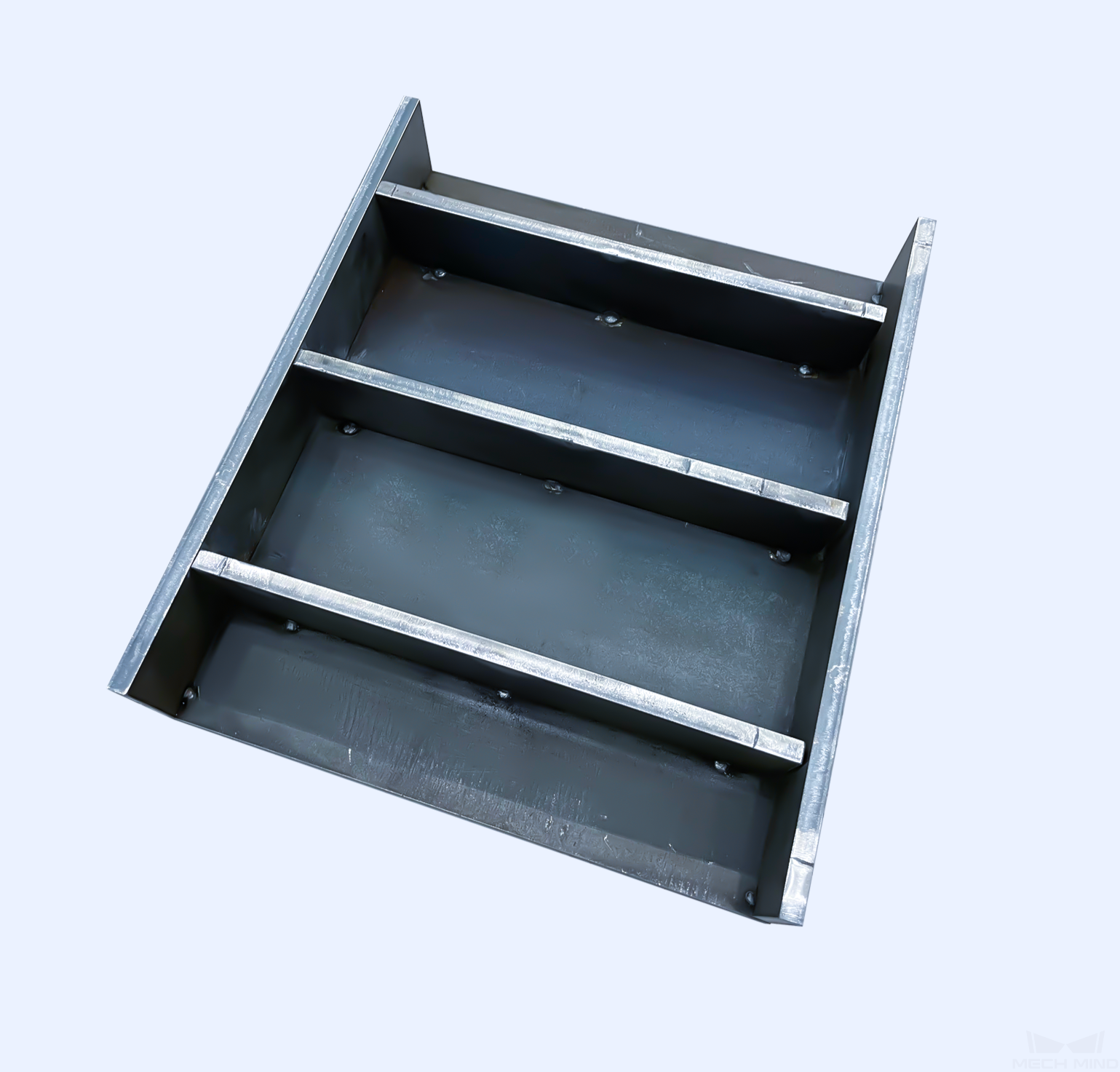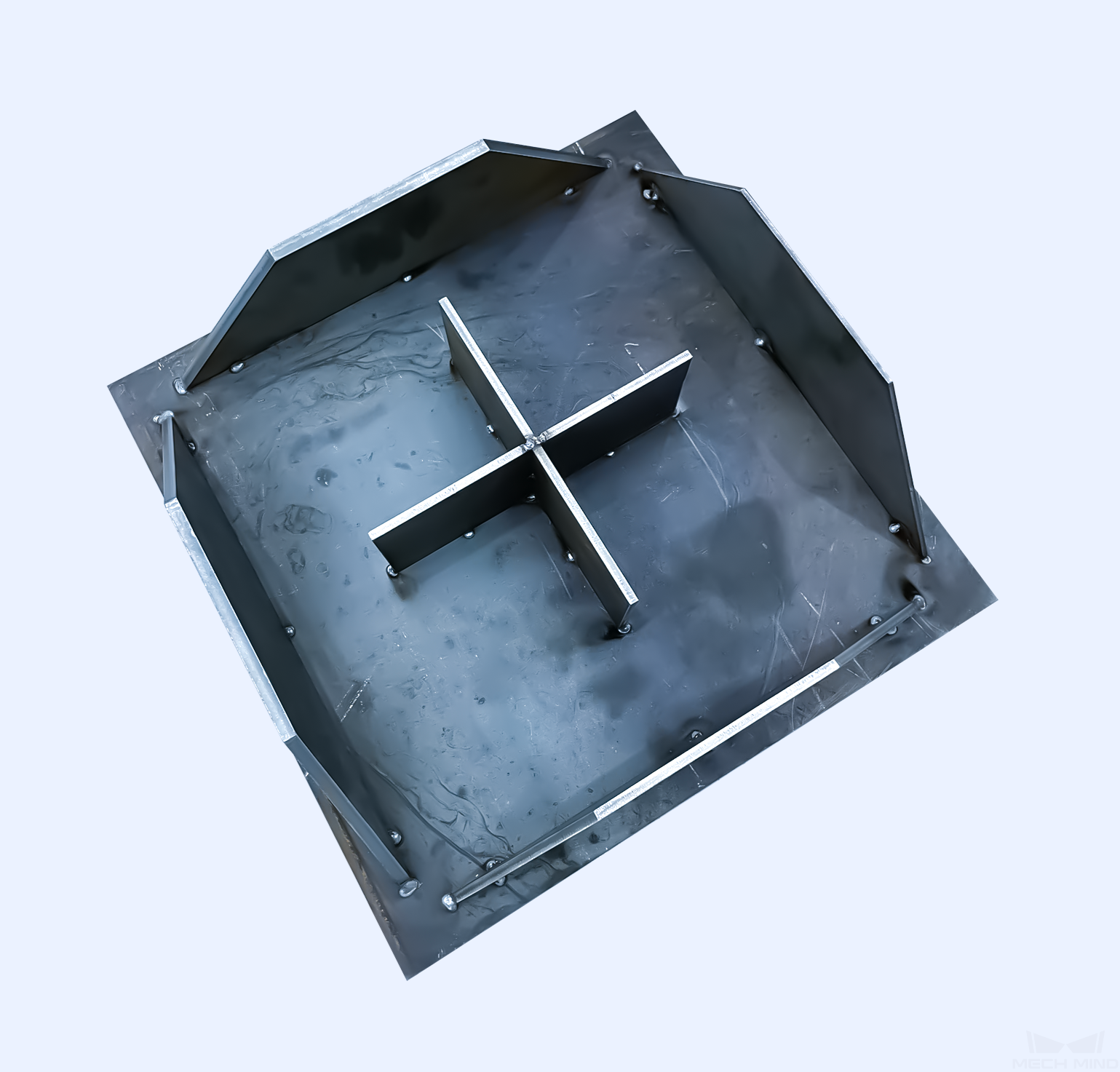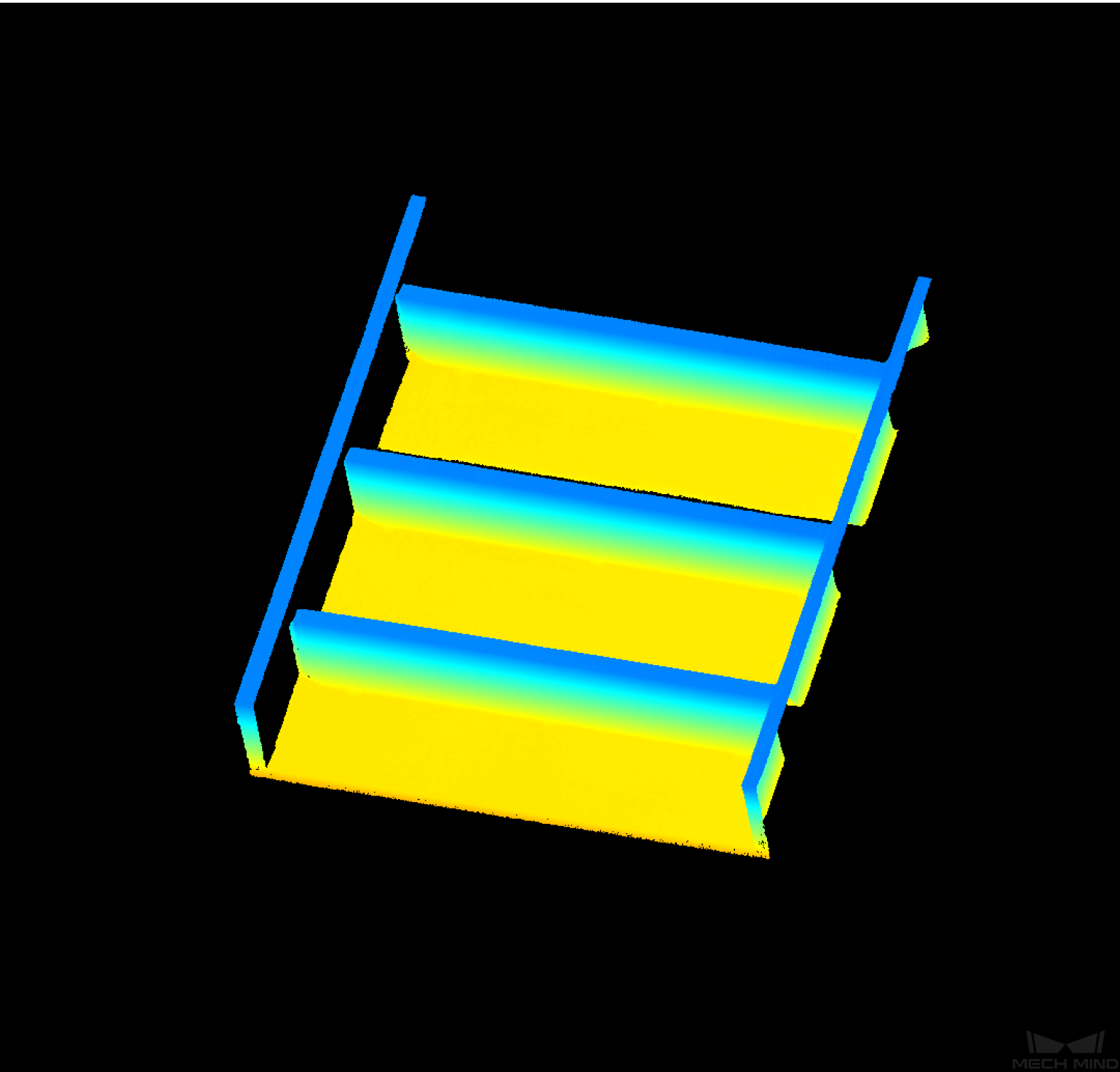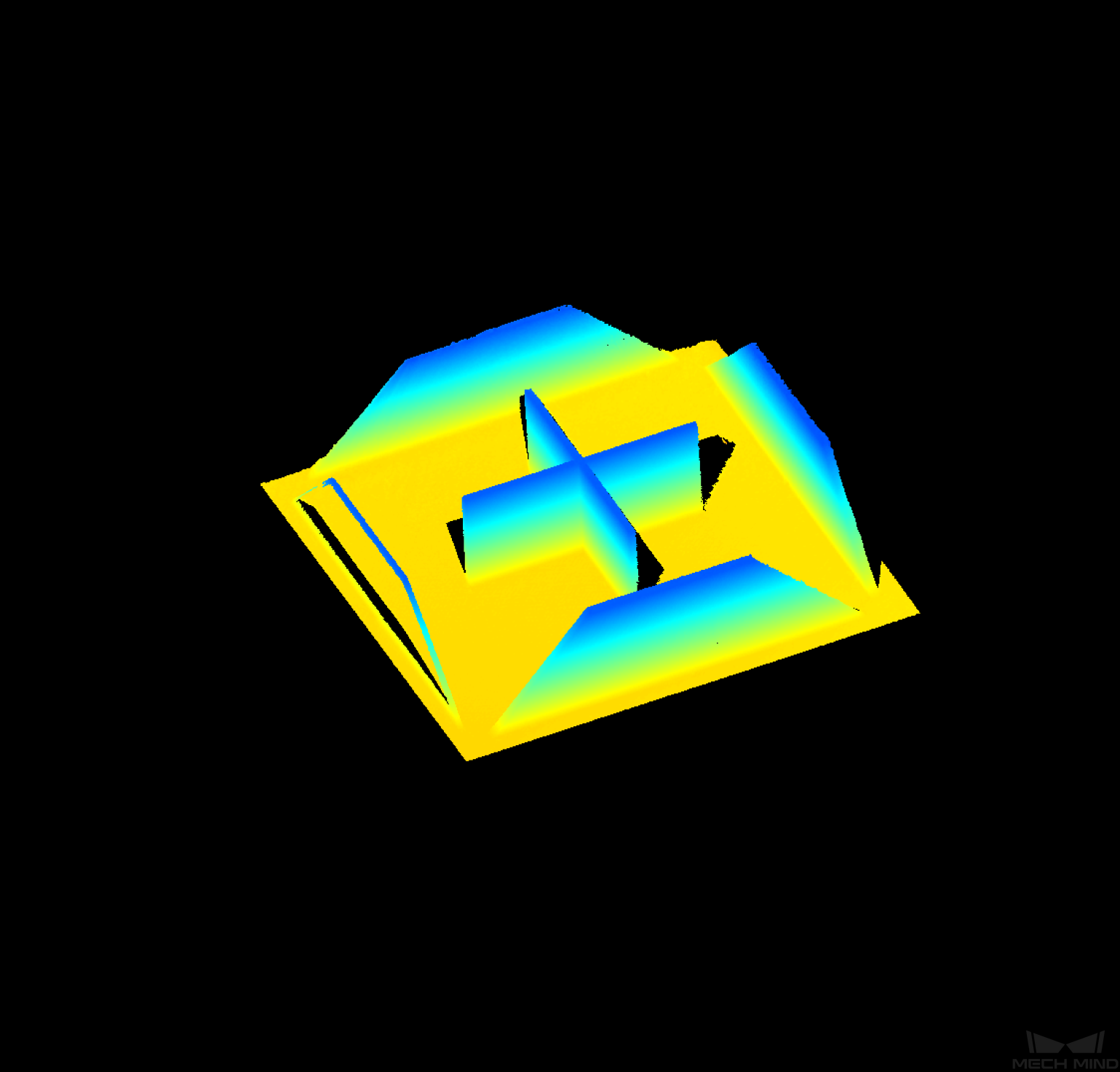Mech-Eye SDK 2.3.3 Release Notes
This topic introduces the new features, improvements, and resolved issues of Mech-Eye SDK 2.3.3.
Mech-Eye Viewer
Support New Camera Model NANO ULTRA
Mech-Eye SDK 2.3.3 can connect to the brand new camera model NANO ULTRA, control it to acquire data, adjust its parameters, and more. Meanwhile, NANO ULTRA provides a built-in parameter group named Reflective piece welding. This parameter group is suitable for welding reflective pieces or welding two workpieces at an angle.
|
|
|
|
|
|
For the technical specifications of NANO ULTRA, please refer to NANO ULTRA.
| If you need to use Mech-Vision to connect to NANO ULTRA, please use version 1.8.2 or above. |
PRO S andPRO M: Improved the Speed and Performance of Reflective Fringe Coding Mode
After the firmware of the PRO S and PRO M series is upgraded to 2.3.3, when acquiring data with the Fringe Coding Mode parameter set to Reflective, the following aspects have been improved:
-
Compared to version 2.3.2, the acquisition time is shortened:
-
When ROI is not set, the acquisition time of depth data is shorted by about 20%.
-
Setting an ROI can further shorten the acquisition time of depth data.
When an ROI with an area 1/2 of the original image is set, the acquisition time of depth data is shorted by about 32%; when an ROI with an area 1/4 of the original image is set, the acquisition time of depth data is shorted by about 40%.
-
-
The following frequently encountered issues of depth data quality issues have been reduced:
Issue Object 2.3.2 2.3.3 Data loss or incorrect depth data due to interreflection
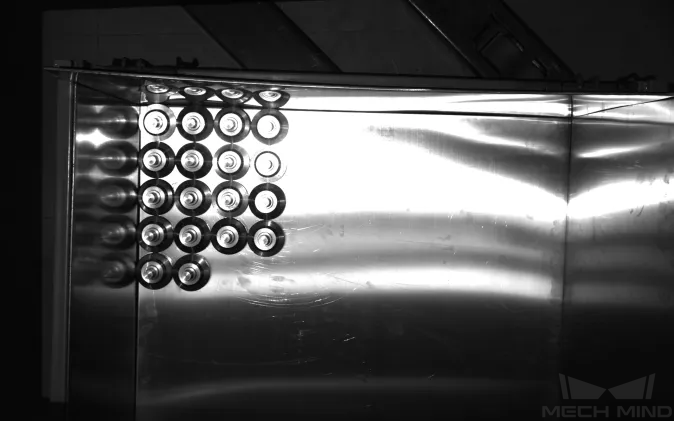
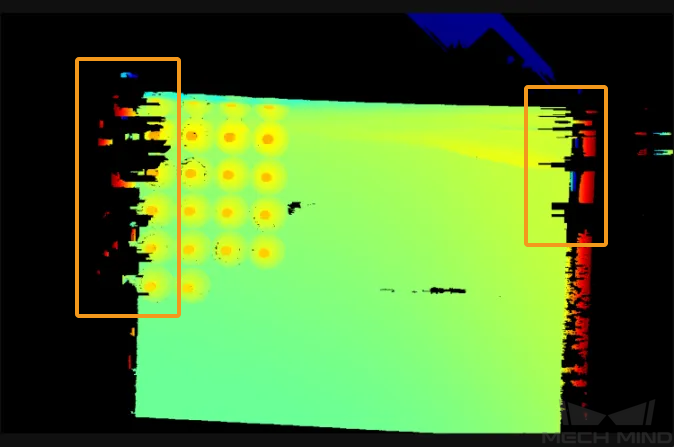
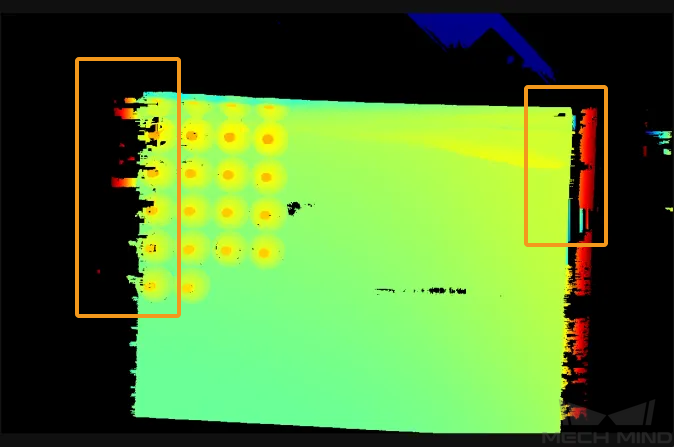
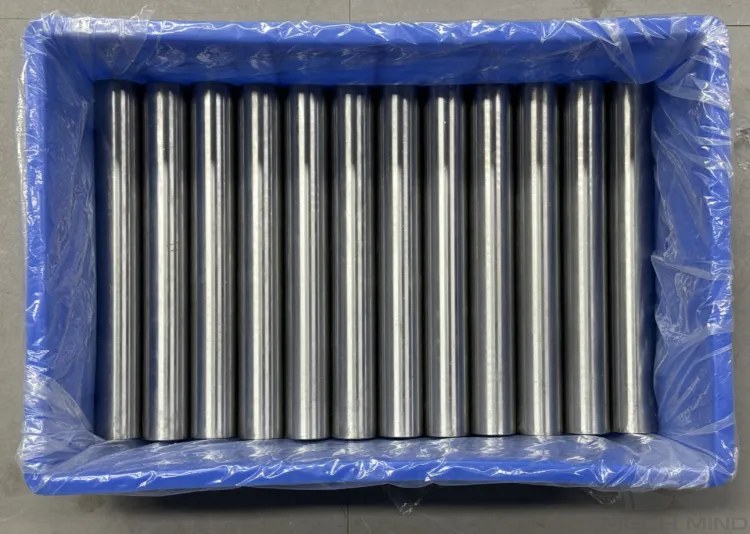
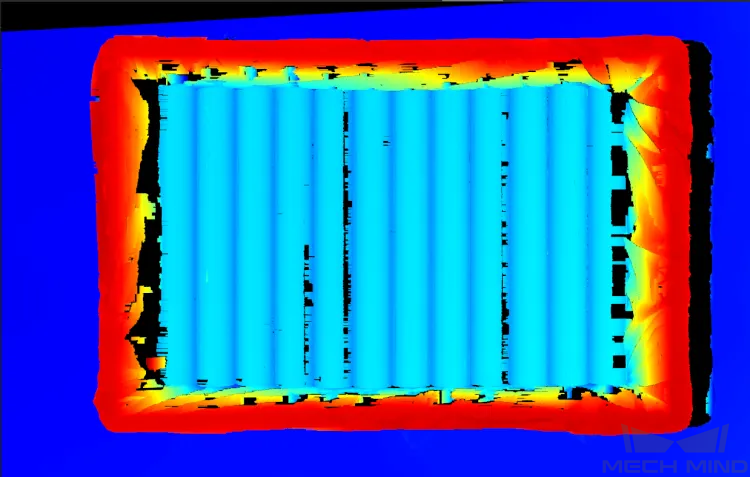

Incorrect depth data of objects suspended in the air
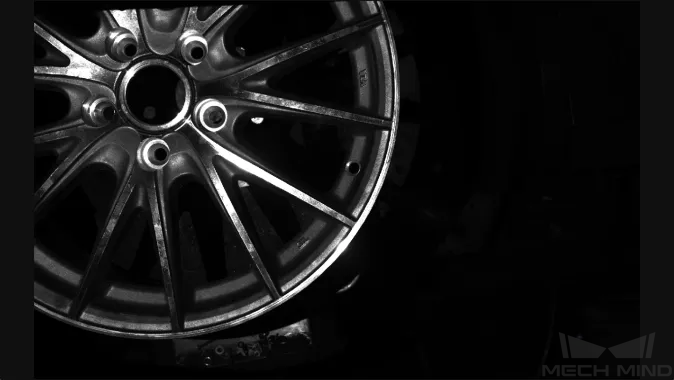
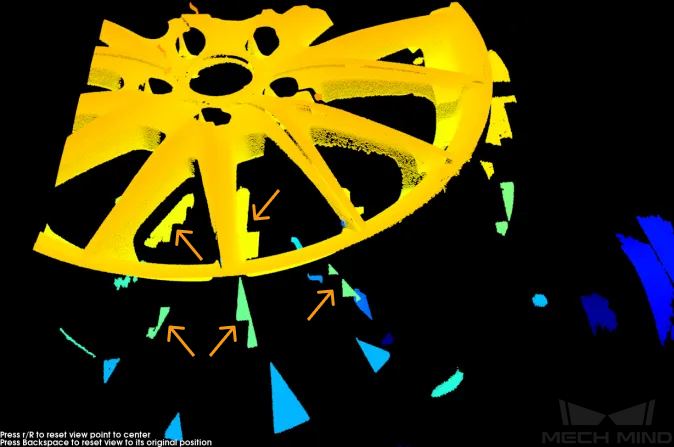

Data loss due to glare
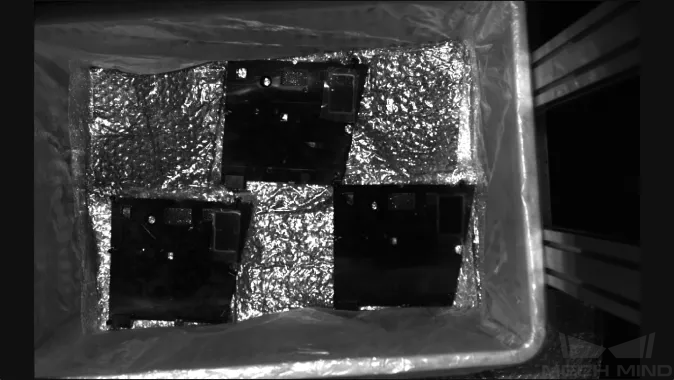
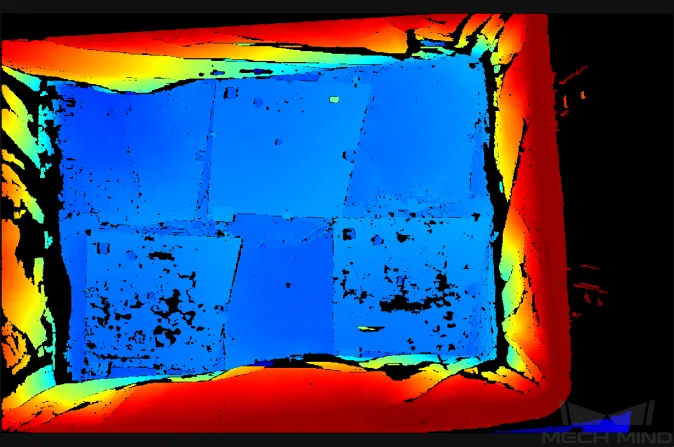

In addition, the Stripe Contrast Threshold parameter can now be adjusted when the Reflective option is used.
Resolved Issues
The following issues have been resolved in Mech-Eye SDK 2.3.3:
-
NANO: When the Exposure Multiplier parameter is greater than 1, after switching the Fringe Coding Mode parameter from Accurate to Fast, the pixel values of the depth map acquired for the first time were all invalid (nan).
-
NANO: When using the same parameter configuration, the acquisition time of the 2D image was 100 to 200 ms longer than that of Nano.
-
In the Save Data window, when no data type was selected, the Replace file with the same name option could not be selected.
-
The virtual device file saved with version 2.1.0 and below could not be opened.
Mech-Eye API
Support New Camera Model NANO ULTRA
Mech-Eye SDK 2.3.3 can connect to the brand new camera model NANO ULTRA, control it to acquire data, adjust its parameters, and more. Meanwhile, NANO ULTRA provides a built-in parameter group named Reflective piece welding. This parameter group is suitable for welding reflective pieces or welding two workpieces at an angle.
|
|
|
|
|
|
For the technical specifications of NANO ULTRA, please refer to NANO ULTRA.
| If you need to use Mech-Vision to connect to NANO ULTRA, please use version 1.8.2 or above. |
PRO S andPRO M: Improved the Speed and Performance of Reflective Fringe Coding Mode
After the firmware of the PRO S and PRO M series is upgraded to 2.3.3, when acquiring data with the ProjectorFringeCodingMode (Fringe Coding Mode) parameter set to Reflective, the following aspects have been improved:
-
Compared to version 2.3.2, the acquisition time is shortened:
-
When ROI is not set, the acquisition time of depth data is shorted by about 20%.
-
Setting an ROI can further shorten the acquisition time of depth data. When an ROI with an area 1/2 of the original image is set, the acquisition time of depth data is shorted by about 32%; when an ROI with an area 1/4 of the original image is set, the acquisition time of depth data is shorted by about 40%.
-
-
The following frequently encountered issues of depth data quality issues have been reduced:
Issue Object 2.3.2 2.3.3 Data loss or incorrect depth data due to interreflection






Incorrect depth data of objects suspended in the air



Data loss due to glare



In addition, the FringeContrastThreshold (Stripe Contrast Threshold) parameter can now be adjusted when the Reflective option is used.
Resolved Issues
The following issues have been resolved in Mech-Eye SDK 2.3.3:
-
NANO: When the Exposure Multiplier parameter is greater than 1, after switching the Fringe Coding Mode parameter from Accurate to Fast, the pixel values of the depth map acquired for the first time were all invalid (nan).
-
NANO: When using the same parameter configuration, the acquisition time of the 2D image was 100 to 200 ms longer than that of Nano.
-
The
get_color_image()command in line 26 of the capture_stereo_2d_images Python sample was mistakenly written asget_gray_scale_image().
GenICam Interface
Support New Camera Model NANO ULTRA
Mech-Eye SDK 2.3.3 can connect to the brand new camera model NANO ULTRA, control it to acquire data, adjust its parameters, and more. Meanwhile, NANO ULTRA provides a built-in parameter group named Reflective piece welding. This parameter group is suitable for welding reflective pieces or welding two workpieces at an angle.
|
|
|
|
|
|
For the technical specifications of NANO ULTRA, please refer to NANO ULTRA.
| If you need to use Mech-Vision to connect to NANO ULTRA, please use version 1.8.2 or above. |
PRO S andPRO M: Improved the Speed and Performance of Reflective Fringe Coding Mode
After the firmware of the PRO S and PRO M series is upgraded to 2.3.3, when acquiring data with the ProjectorFringeCodingMode (Fringe Coding Mode) parameter set to Reflective, the following aspects have been improved:
-
Compared to version 2.3.2, the acquisition time is shortened:
-
When ROI is not set, the acquisition time of depth data is shorted by about 20%.
-
Setting an ROI can further shorten the acquisition time of depth data. When an ROI with an area 1/2 of the original image is set, the acquisition time of depth data is shorted by about 32%; when an ROI with an area 1/4 of the original image is set, the acquisition time of depth data is shorted by about 40%.
-
-
The following frequently encountered issues of depth data quality issues have been reduced:
Issue Object 2.3.2 2.3.3 Data loss or incorrect depth data due to interreflection






Incorrect depth data of objects suspended in the air



Data loss due to glare



In addition, the FringeContrastThreshold (Stripe Contrast Threshold) parameter can now be adjusted when the Reflective option is used.
Resolved Issues
The following issues have been resolved in Mech-Eye SDK 2.3.3:
-
NANO: When the Exposure Multiplier parameter is greater than 1, after switching the Fringe Coding Mode parameter from Accurate to Fast, the pixel values of the depth map acquired for the first time were all invalid (nan).
-
NANO: When using the same parameter configuration, the acquisition time of the 2D image was 100 to 200 ms longer than that of Nano.
-
(Occasional) The camera disconnected and could not be discovered in a short period, and then it recovered automatically.
